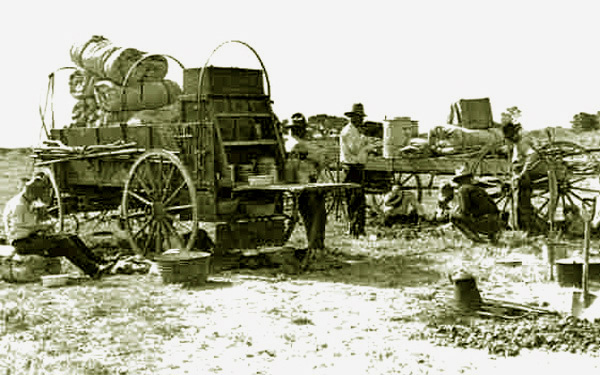
Chuckwagon and hoodlum wagon on roundup, undated
In Wyoming there were
two round-ups, the fall round-up to separate the cattle by brand. In open range country
cattle could spread out over a hundred miles and it was, thus, necessary to round the
cattle up and separate them by brand by driving the cattle past tellers who would typically be owners.
Additionally, in the process a top hand would keep the cattle from circling back into line, so that
they would not be counted twice. The spring round-up, in addition to separating by brand, had the
purpose of branding the calves. The question of who owned unbranded cattle was one of the causes of
the Johnson County War.
A good foreman on a roundup was, of course, a necessity. As John Clay, in his book
My Life on the Range, observed, "Few or any of the owners attended or rode with roundups. The
foremen did the work . . . ."
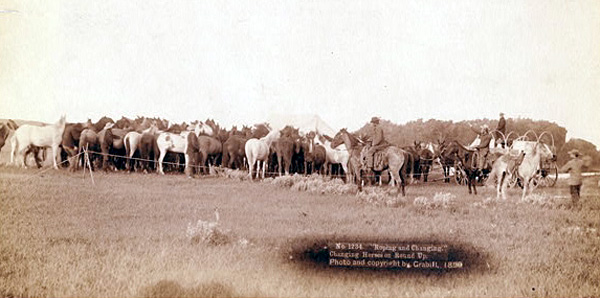
Changing Horses on Roundup, 1890, photo by J. Grabill
Note the rope stretched around the horses, a "rope
corral." When camp was set up it was the job of the wrangler to set up the corral,
usually about 50 feet in diameter. The rope was held up by forked sticks visible in the
photograph. One end of the rope would be tied to a wagon wheel. Another rope tied to
another wheel would serve as a gate for the corral. When the horses were broken, they were
trained to stay in the rope corral.
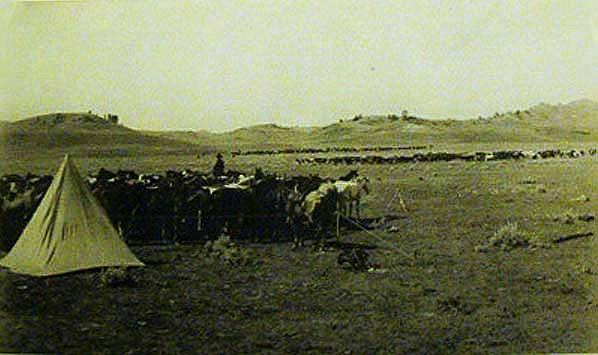
"At Rest," horses in a Rope Corral.
The reason for the large number of horses, called in the southwest
"remuda" and sometimes on the northern plains a "cavoy," "cavvy," or "saddle band," was not only to allow
horses to recover from any injuries and to rest, but horses had different abilities.
Some were better for roping, others for mountainous areas. The roundup could cover over
a hundred miles.
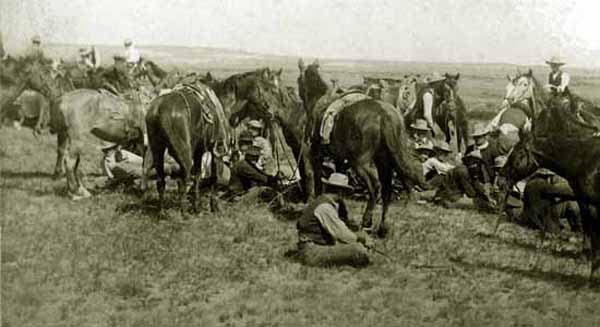
"Waiting for a Cavoy," C. D. Kirkland, approx. 1892.
Like much of the terminolgoy of the cowboy, the terms remuda and cavoy come from the
Spanish, cavoy from caballo, horse.
Representatives of the Wyoming Stock Growers Association would also be on the roundup to insure that
the roundup was conducted in accordance with the rules. One job was to inspect brands.
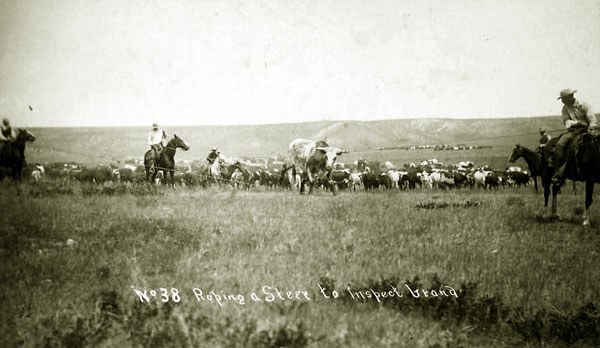
Roping for Inspection, C. D. Kirkland, approx. 1892.
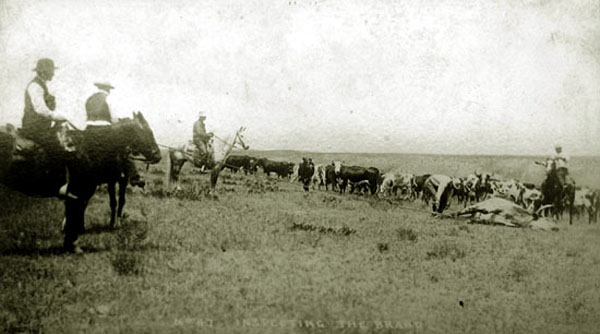
"Inspecting the Brand," C. D. Kirkland, approx. 1892.
In some instances, the inspection might indicate that a brand had been altered. Positive proof could be attained by slaughtering the animal and skinning it.
The inside of the hide, whould show the alterations.
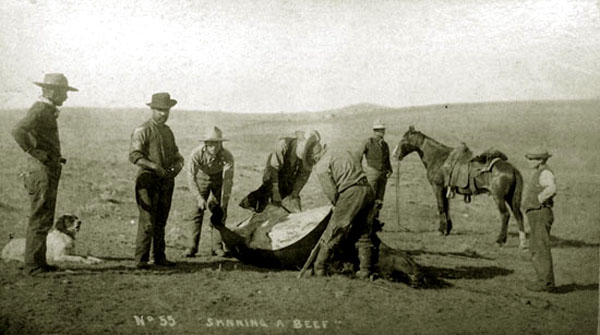
"Skinning" C. D. Kirkland, approx. 1892.
Later various cattle growing states would employ brand inspectors at the various large markets such as
Kansas City, Chicago, and Omaha. Their job was to see that the sellers actually owned the cattle; that is
whether the brands matched those that were registered to the seller. Additionally, on a roundup there might be
cattle found with a brand that was not registered to a wagon participating in the roundup. Sometimes a
bovine might wander from its customary range. As a courtesy to the distant owner, such cattle would be
shipped off to market. The state brand inspectors at the market would be able to ascertain ownership, and
assure payment to the owner.
Music this page:
I Ride an Old Paint
I ride an old Paint, I lead an old Dan.
I'm off to Montan' for to throw the hoolihan.
They feed in the coulees, they water in the draw;
Their tails are all matted, their backs are all raw.
[Chorus]
Ride around, little dogies, ride a round them slow.
For the finery and snuffy are a rarin' to go
[Verse]
Old Bill Jones had two daughters and a song,
One went to Denver and the other went wrong.
His wife, she died in a pool room fight,
And he sings this song from morning till night:
[Chorus]
Oh, when I die, take my saddle from the wall,
Put it on my pony and lead him from the stall.
Tie my bones to his back, turn our faces to the west,
And we'll ride the prairies we love the best.
[Chorus]
Next Page, Roundups continued.
|